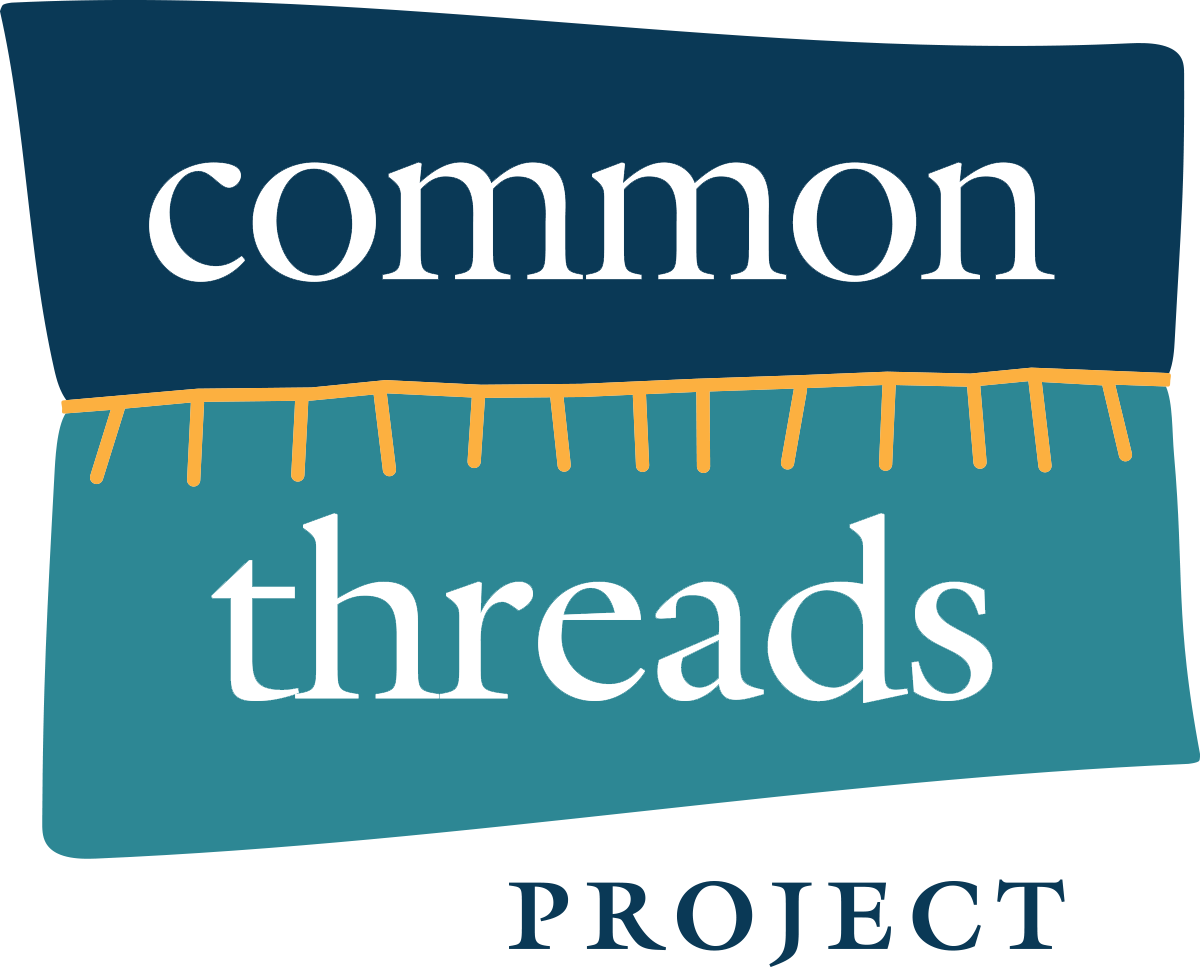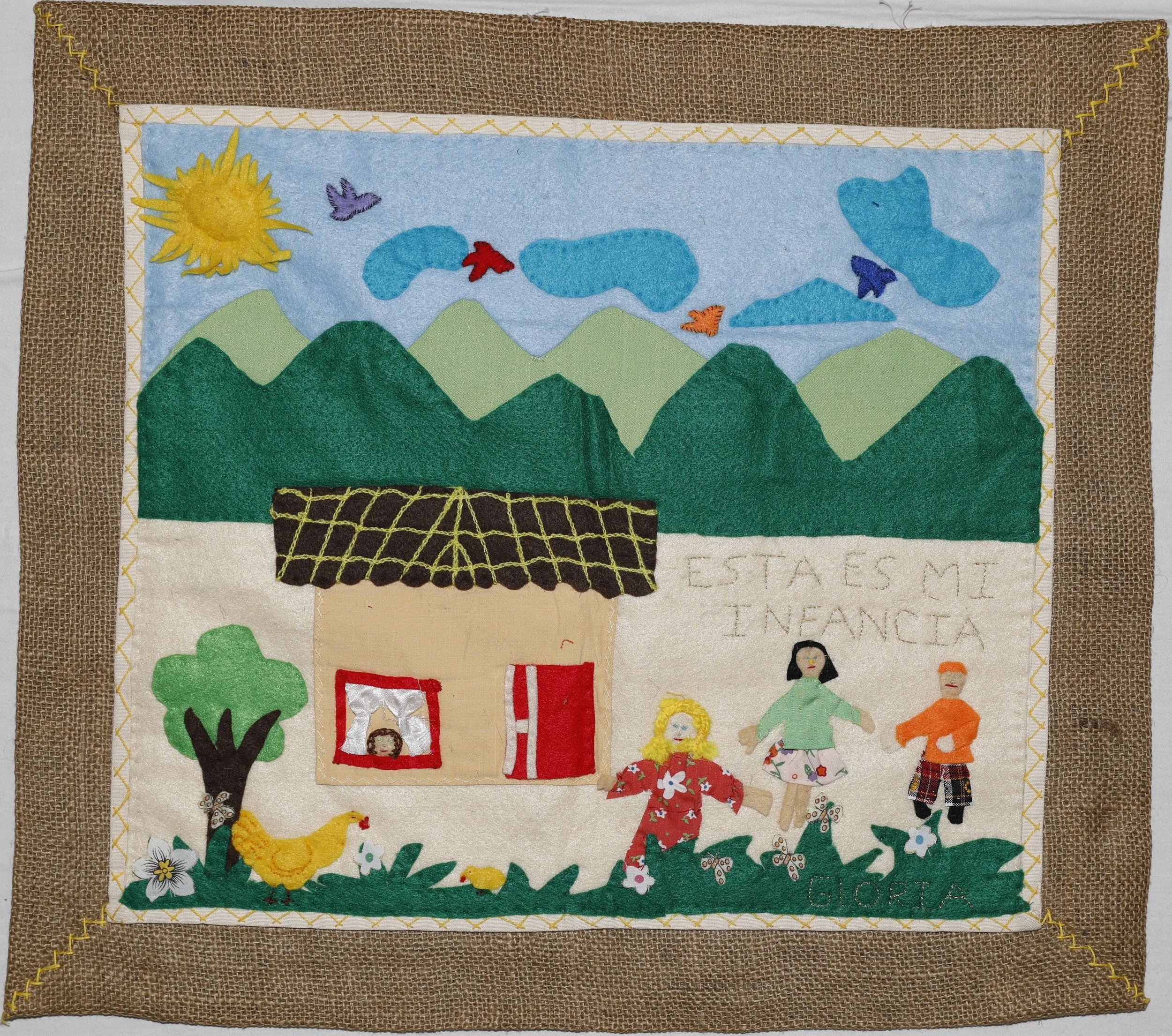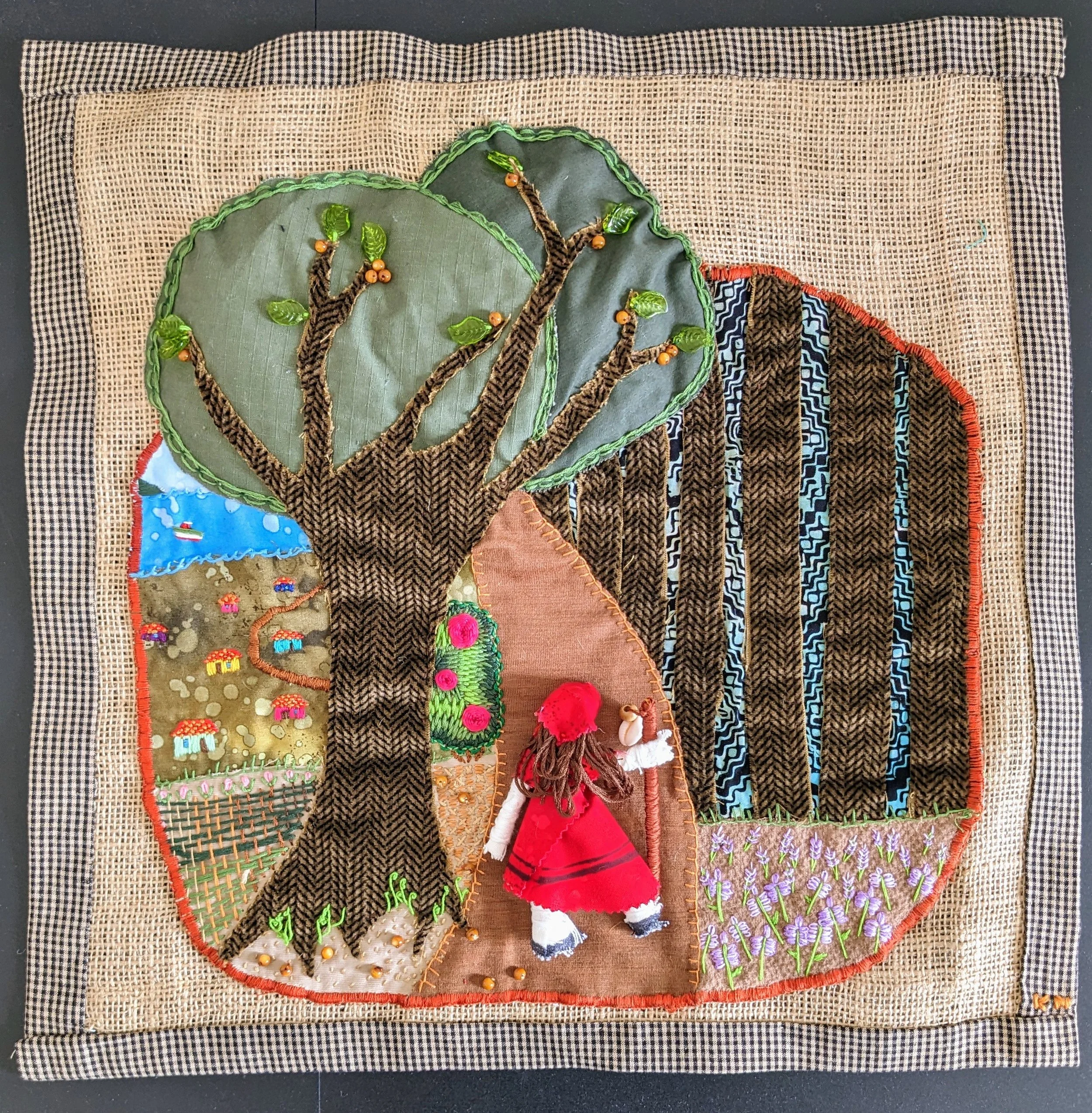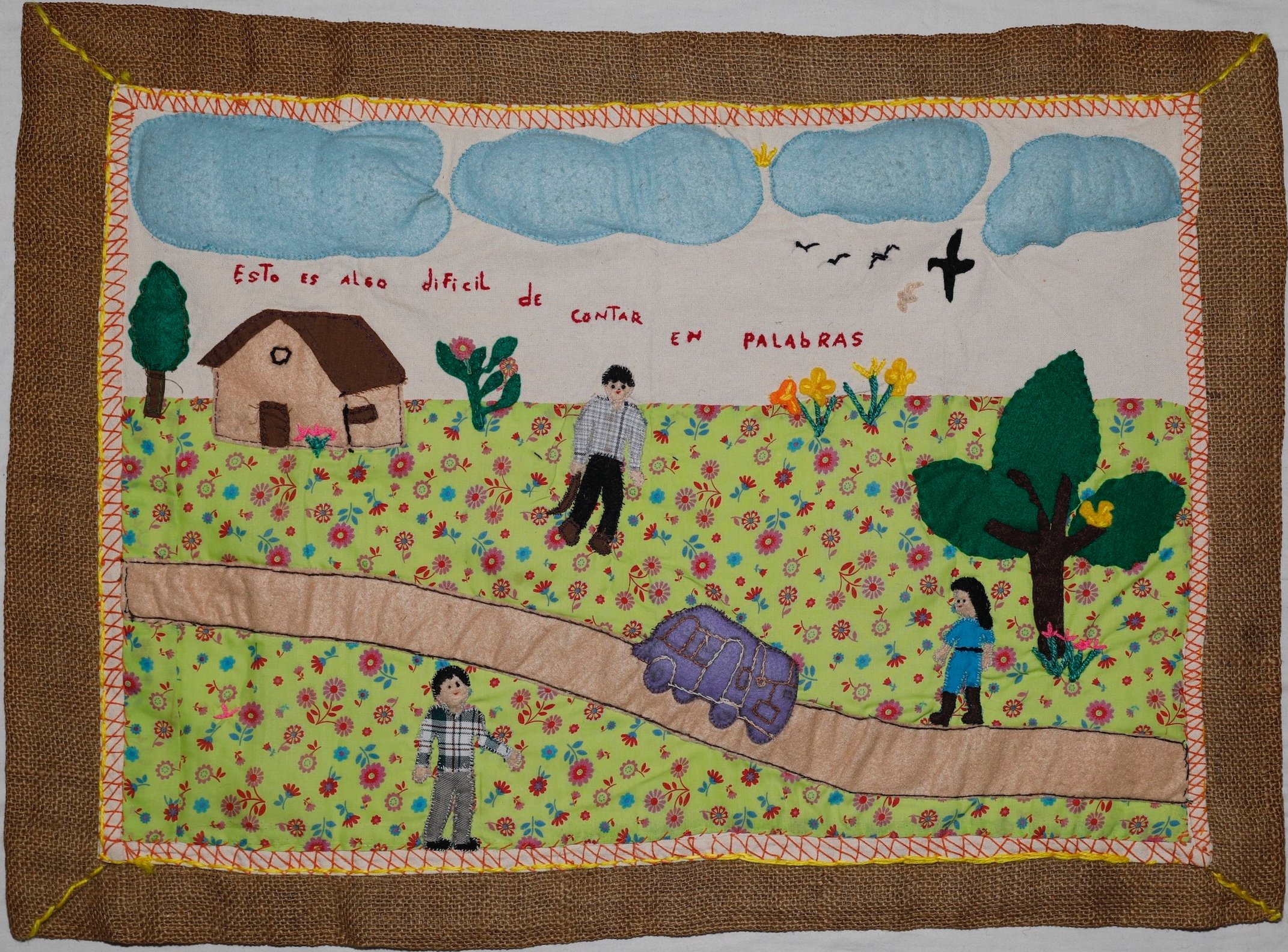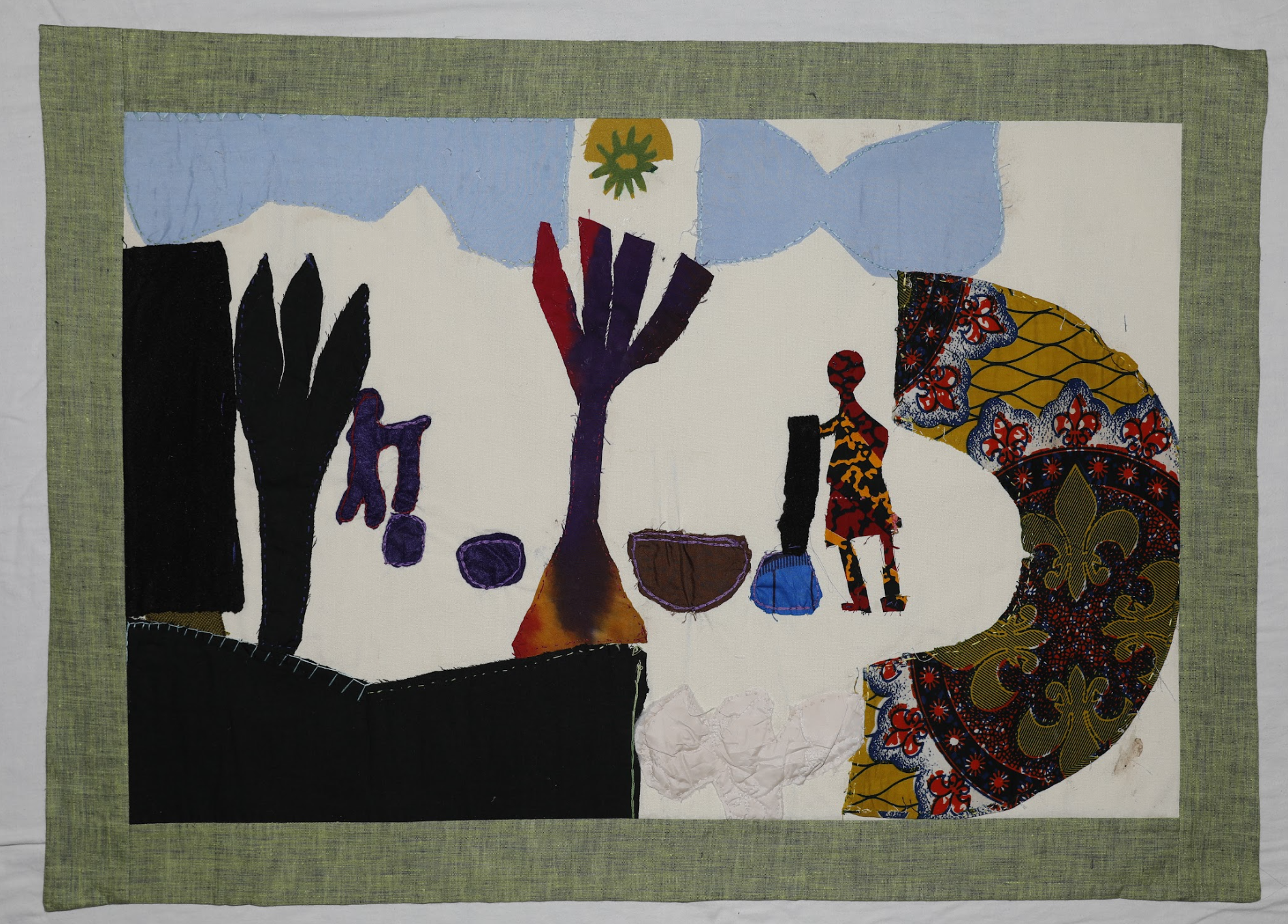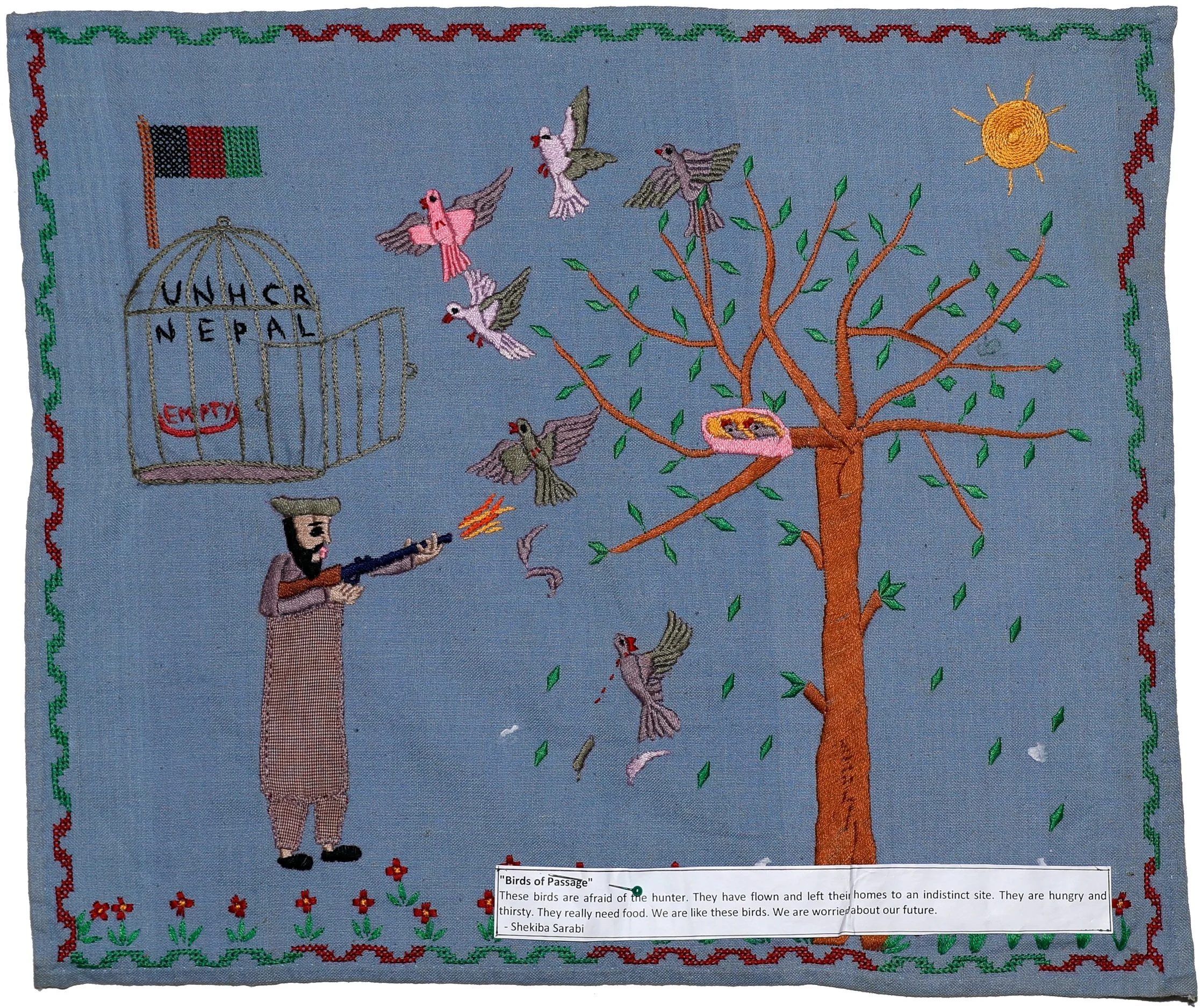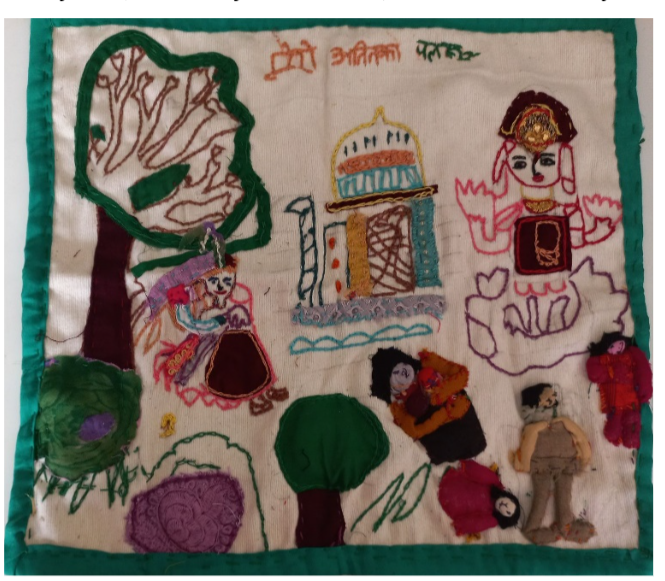“Please tell our story. We want the world to know.”
- Story cloth circle participant
This exhibition brings together story cloths from Ecuador, Nepal, Democratic Republic of Congo, Bosnia, and the United States. They have been made as part of a recovery program designed for survivors of sexual violence, trauma, and displacement and by trained clinicians who facilitate the program.
Common Threads Project, in collaboration with local partners, has developed a transformative trauma intervention inspired by the ancient cultural practice of sewing story cloths. The textiles are storytellers; they are messengers. They convey unspeakable suffering with power and immediacy. While they do not spare us the depth of their pain, they also bring us into the fullness of the lives of their makers.
This exhibit invites us to bear witness to be a part of the healing process of the survivors by hearing their stories, acknowledging their pain, and affirming their hopes. We invite you to take a quiet moment to reflect as you embark on this journey and to allow the story cloths to influence you in their own way.
The organization of this catalog reflects the groupings in the exhibit. Story cloths were grouped in four sections: Hidden Memories, Surviving Atrocities, Healing Wounds, and Building Solidarity. The five prompts used in CTP circles were spread throughout the exhibit, as they are here as well. Most cloths have titles, but artists’ names are omitted.
For some story cloths, there are accompanying videos and audio recordings. Click on the image of story cloths with a 🔊 or 🎥 to hear from facilitators, participants, and more.
“It is here that we reveal what we kept hidden.”
On the surface, many of the story cloths look innocent or even joyful, though some of the titles may tell us otherwise. A colorful scene might signal that a beautiful world has been harmed by violence but cannot be conquered by it. Those who made these story cloths seem to assert, “I will not allow what I have suffered to define my life. I am so much more than my pain.” In the elements of the textile that recall beauty, lies a powerful force for healing.
When the representation of trauma is understated or camouflaged, the women tell one another the stories behind the stories that reveal their invisible wounds. Inside the colorful houses there may be secrets and suffering from decades ago.
“I see so many details, I see all of us. For somebody this might look like child’s work … but we know what this is about. On this cloth are parts of our lives.”
These cloths transport us into a world of pain. They speak of the horrors of war, violence, loss and devastation. Women, girls, and people of all genders are subjected to sexual and gender-based violence in conflict, in their efforts to escape, and in their places of so-called refuge. The stigma of rape often means rejection by family and communities, loss of opportunities for education and employment. Poverty and displacement expose women, girls, and LGBTQI people to sexual exploitation.
“If I cannot say my troubles to anyone, at least I can display them in this art form. At least someone will understand after looking at the masterpiece that she is reeling under pain.”
“I feel like I’ve rid myself of a heavy load, a load I carried. It’s passed now. I am getting rid of things that I had carried in my heart.”
Story cloths can demonstrate how survivors work through the shame, despair, guilt, fear and grief that can maintain a powerful grip on those who endure brutality. Disclosing one’s story in cloth is an important part of this integrative process, but it is not sufficient. In order to move forward, survivors gradually come to experience their stories in a new way, freed from self-loathing, self-blame, numbness, or reliving the trauma. They appreciate that trauma “symptoms” have functioned in the service of their survival. They need to reset the body’s automatic response to traumatic memory by learning to soothe a nervous system that has had to function on high alert. The action of slow, rhythmic stitching while one is discussing highly stressful experiences has an intrinsically calming effect that helps to maintain stability.
Within the group, participants restore connection with others and find dignity and self-respect.
“Now I also know how it is important to understand women feel guilty for what happened to them … they need support, they need somebody who will listen to them.”
“After everything it is a proof of how we are connected, how much we are close to each other. It is so special and beautiful, we are together on that cloth like here in reality. I am proud of our work!”
“This was a shared pain, because we belong to the same community. After looking at this [story cloth], mine and even other community members’ grief lessened.”
These textiles celebrate the power of the collective--facilitate healing, create a community of support, and work for change. As individuals recover, they transform personal strength into collective strength. In this way the ‘silenced’ raise their voices together. A transformation that begins in individuals often leads to broader social change.
